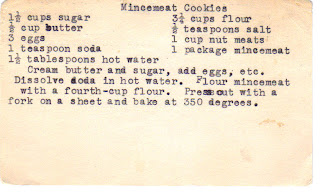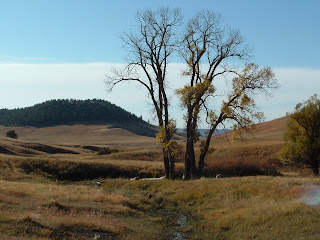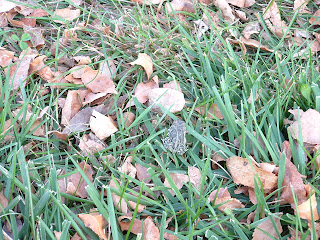Cooler weather and increasing holiday parties mean that cookie baking is back in force. I'm pulling out all the recipes for good, sturdy, spicy cookies that go with drinks such as cocoa and cider. This one for oatmeal cookies, for example, is a winner. You can vary the spices to your taste--ginger and nutmeg work well--and the preparation is very simple. Just don't forget that you need to start this the day before so that the dough can chill and set up. Oh, and when they say "quick oats," they mean it. Steel cut oats do not work without some serious soaking. Don't ask me how I know this.
Oatmeal cookies
1 cup (2 sticks) melted butter or margarine
2 tsp. cinnamon
2 cups sugar
1 ½ tsp. baking soda
2 eggs
2 cups quick oats
1 T molasses
2/3 cups raisins
2 tsp. vanilla
1 cup chopped nuts
2 cups flour
½ cup semi-sweet chocolate chips
Mix dry ingredients together and mix into wet ingredients. Let set overnight in refrigerator. Pinch off by tsp. Put on slightly greased pan and bake at 350* F for 12 minutes. Makes 6 dozen.
--Mary Johnson Jenkins, Big Spring
Here is a recipe for very festive cookies, especially daring for West Texas. Yes, you have to share them.
Melba’s rum cookies
3 cups flour, divided1 cup brown sugar
½ cup butter or margarine
1 tsp. cloves
4 eggs, one at a time; mix well
1 tsp. cinnamon
3 T sweet milk
½ cup rum
1 tsp. baking soda
½ tsp. salt
Blend 1 ½ cups of flour with remaining ingredients. Blend well together. Sift remaining 1 ½ cups flour over 1 ½ lb. pecans, ½ lb. chopped candied cherries, ½ lb. chopped candied pineapple, and ½ lb. white raisins. Mix well until fruit and nuts are well floured and add to first mix. Drop by tsp. onto greased cookie sheet and bake at 325* F or less for 20-30 minutes. Moisten cloth with rum and spread over top of cookies when they are stored.
--Melba Campbell Johnson
I love the name of these cookies, but I'm not sure where it arose. This is a very different recipe from the more widely known stone jar molasses cookies, relying instead on brown sugar. A lot of brown sugar. It's another crypto-classic in the instructions department.
One explanation I found is that a stoneware jar is supposed to be used to press small balls of cookie dough flat before baking. I've also heard that cooks used a sugared drinking glass bottom for flattening these. In any case, the directions are simple: cream together the butter and sugar, add eggs and mix in one at a time, add the milk and vanilla, then add the mixed dry ingredients. Let this rest for 10 minutes and then roll out small balls of the dough. Place on the greased cookie sheet and flatten gently. Baking time is about 10 minutes.
Stone jar cookies
1 box brown sugar
3 eggs
3 ¼ cups flour
¼ cup milk
1 tsp. nutmeg
1 tsp. baking soda
2 cups pecans
1 tsp. vanilla
Grease and flour cookie pan the first time. Bake at 375* F.
--Vada Brooks Johnson
Finally, this is a real holiday classic. Gene prefers his mincemeat in pie form, but it makes great cookies, too. I would use a half-jar of mincemeat for this. For nutmeats, being Texan, I use fresh pecans, chopped. Roll the dough into small balls and press with a fork twice, crosswise, then bake for ~10 minutes.
Mincemeat cookies
½ cup butter
1 ½ cups sugar
3 eggs
3 ¼ cups flour
½ tsp. salt
1 cup nut meats
1 pkg. mincemeat
1 tsp. baking soda
1 ½ T hot water
Cream butter and sugar, add eggs, etc. Dissolve soda in hot water. Flour mincemeat with a fourth-cup flour. Press out with a fork on a sheet and bake at 350* F.
--Vada Brooks Johnson
Happy Monday, happy fall.


















.JPG)
.JPG)
.JPG)
.JPG)
.JPG)
.JPG)
.JPG)
.JPG)
.JPG)
.JPG)
.JPG)
.JPG)


.JPG)
.JPG)
.JPG)
.JPG)
.JPG)
.JPG)
.JPG)
.JPG)
.JPG)
.JPG)
.JPG)
.JPG)
.JPG)
.JPG)
.JPG)
.JPG)
.JPG)
.JPG)






